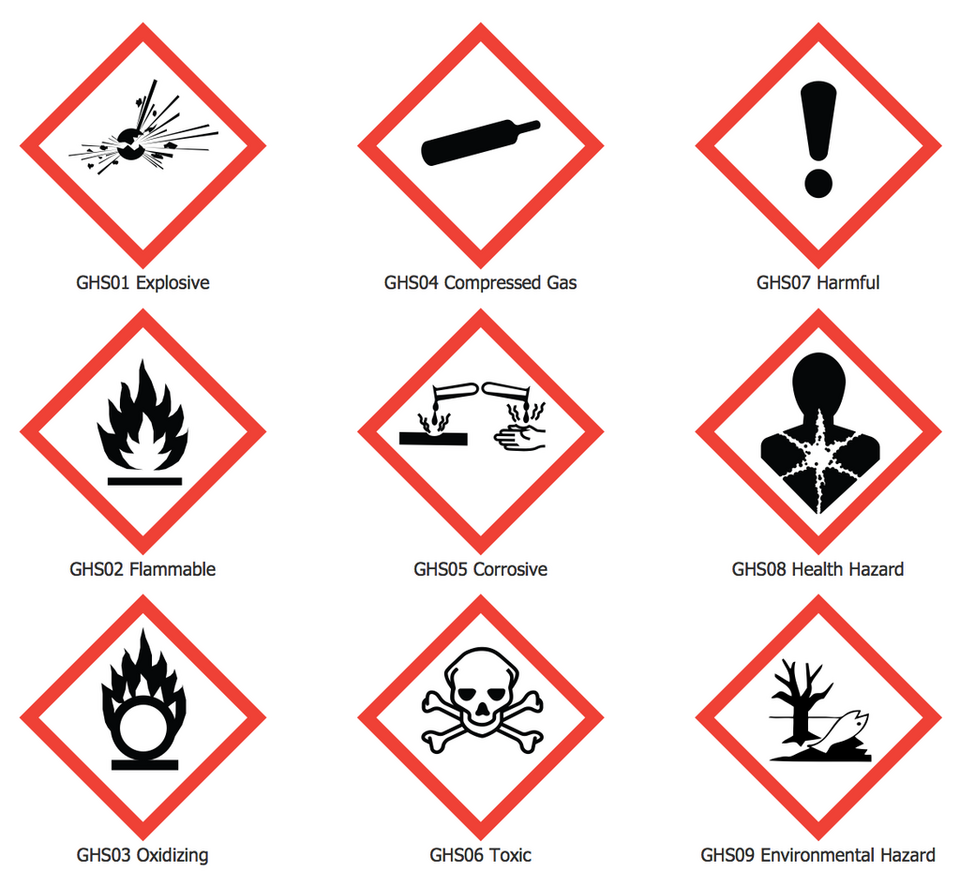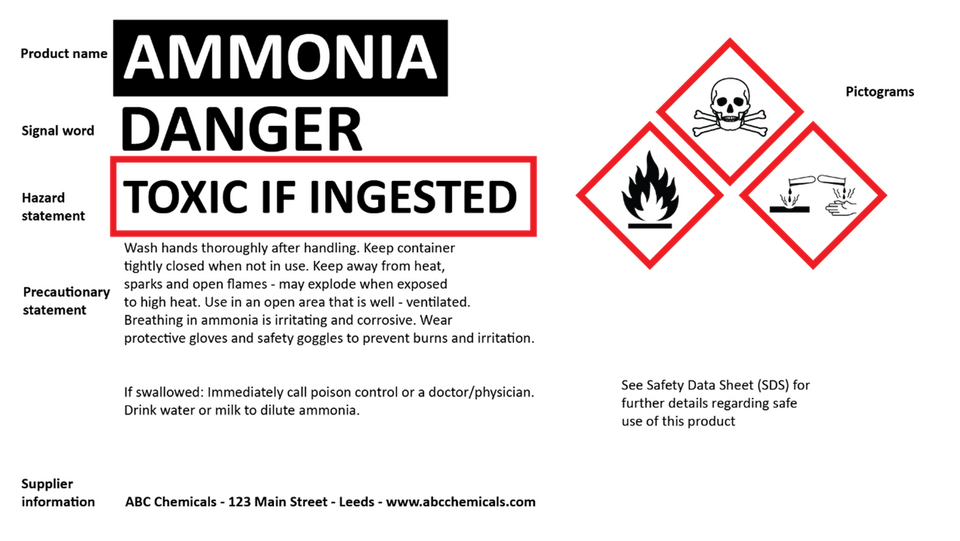What is the Globally Harmonized System and why is it important?
A Globally Harmonized System (GHS) was developed by the United Nations for the Classification and Labelling of Chemicals. It is a way to bring into agreement the chemical regulations and standards worldwide. The 9th GHS revision was published in 2021
GHS includes criteria for the classification of health, physical and environmental hazards, as well as specifying what information should be included on labels of hazardous chemicals as well as safety data sheets. The goal for this is to have the same set of rules for classifying hazards, and the same format and content for labels and safety data sheets (SDS) to be adapted and used worldwide.
This is more cost effective for governments to regulate and maintain, and easier for workers to learn and understand.
This article summarizes the relationship of GHS hazard statements, pictograms, signal words, hazard classes, categories, and precautionary statements.
There are two major elements of GHS.
Classification of Hazards & Chemicals
These rules cover classifying pure chemicals and mixtures. They may differ depending on the mixtures of chemicals. According to GHS rules, substances must be evaluated and classified via the use of standardized tests.
Hazard classes
The Globally Harmonized System uses three hazard classes
- Health hazards (e.g. Skin irritants/carcinogens),
- Physical hazards (e.g. Explosives/flammables),
- Environmental hazards (e.g. Chronic/Acute aquatic toxicity)
Signal words, ‘warning’ or ‘danger’ Additionally, a precautionary statement is often used when categorising different chemicals and mixtures to inform the user of how the product should be used to minimise risks to them and the environment they’re in. These categories are based on a number of data points after undergoing various tests.
The different hazard classes are represented by a group of 9 pictograms, see below image:

Communication of hazards and precautionary information
These hazards and precautionary information is communicated by the use of labels and Safety Data Sheets.
Labelling Requirements
After classifying the hazardous mixture, substance, or chemical, an appropriate and respective label needs to be applied. These are as follows:
Certain information may appear on the labels, such as the chemical identity, signal words and symbols, and Standard hazard statements, according to the classification of the chemical or mixture of the product, that the labels is going on.
- Hazardous Pictograms: used to identify hazardous products. These hazards are then ranked 1 through 5 on intensity, 1 being a stronger hazard, 5 being less so.
- Signal words: “warning” or “danger” are generally used that indicate whether the hazards are moderate or more serious.
- Hazard statements: phrases that describe the nature of the product and the degree of the hazard. These are kept are kept on the Product SDS, and can be identified by a H-code (eg. Causes skin irritation (H315))
- Precautionary statements: describes general preventative, response, storage, or disposal precautions. These are kept on the Product SDS, and can be identified by a P-code (eg. Wear protective gloves (P280)).
- Manufacturer information: identifies the manufacturer company’s name, number, and address.
- Product name or identifiers: identifies the product name
Here is an example of a typical hazard statement that you would find on the label of a chemical or mixture.

Globally Harmonized System Variations:
Aside from manufacturers and importers needing to classify and label any hazardous chemicals or mixtures, local authorities can set mandatory lists for specific substances with GHS classifications.
In many cases, the chosen legal classifications for each country are often matched with minimum classifications. Individual classification lists have already been implemented in China, Korea, and Malaysia, and it seems that many more countries will be implementing these lists in the future.
GHS can vary in different countries or regions. Some of these reasons may include:
- Implementation statue: In some countries, GHS is mandatory, while in other countries it is not mandatory, or totally voluntary.
- Hazard Classes: GHS hazard classes differ from country to country, such as Canada and the USA. The application of the environmental hazard classes is voluntary.
- Hazard Categories: This is where the biggest differentiations can be found, as each country can individually decide about the implementation of the hazard categories. Countries with a set classification and labelling system try to implement GHS with the intention to conserve the former rules and conditions. Other countries, such as China and Mexico, implement GHS without deviating at all from the GHS model of the UN.
- Concentration limit value (CLV): The CLVs for most of the hazard classes are set by the GHS standard of the UN. However, for a group of specific hazard classes, an agreement for CLVs didn’t seem to be possible. The UN then allowed the implementation of different CLVs for the following hazards: respiratory and skin sensitisation, carcinogenicity, reproduction toxicity, and specific target organ toxicity. Due to this, there may be products or mixtures that have to be classified as skin sensitizing in countries such as China, Canada or the USA, but not in the EU or Singapore.
- Legal Classifications: A list of legally binding classifications for chosen substances exists, even in the former system. In this context, the EU is the most active authority, and China, Korea, and Malaysia have similar lists. And other countries may follow suit in the future.
- EUH statements: these have been implemented by the EU, in addition to the GHS hazard statements. (e.g. EUH208 – Contains a sensitizing substance, may cause an allergic reaction.)
With highly attentive and qualified staff members, updated technology and software, Vickers Oils provides products which are classified and labelled in accordance to the local regulations, as well as global regulations. We provide safe, regulated, and eco-friendly products to a wide range of customers, and your health is in our top priority.